Gran Canaria is a small Spanish island located in the Atlantic Ocean. While it may not seem like a bird-watching destination at first glance, the island is home to a diverse range of avian species.
From migratory birds to those that call the island their permanent residence, Gran Canaria is truly a paradise for bird enthusiasts. With its unique habitats, unspoiled landscapes, and rich biodiversity, the island offers a wide variety of bird-watching opportunities.
Whether you are an experienced ornithologist or just starting your birding journey, Gran Canaria is an excellent destination to explore and discover the fascinating world of birds.
In this article, we will take a closer look at some of the bird species that you can find on this beautiful island.
1. Finches
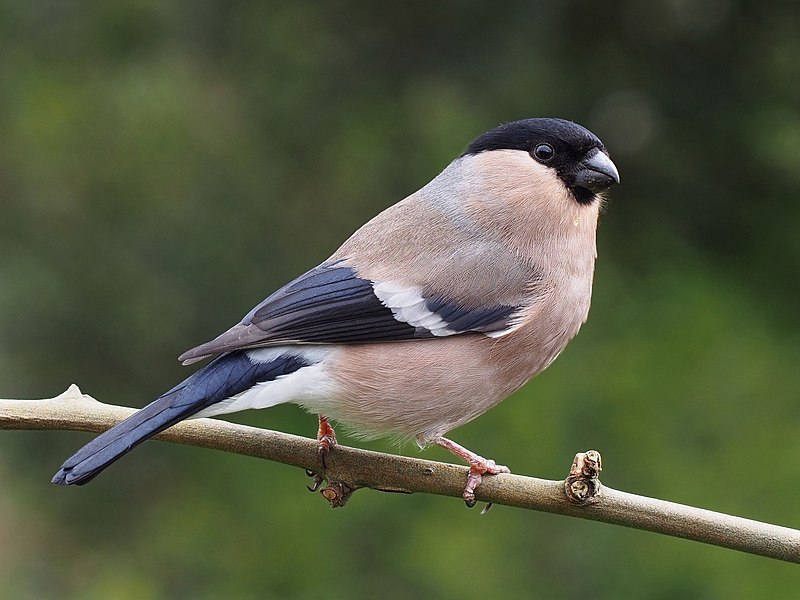
Finches are a diverse group of passerine birds found around the world, excluding Australia and polar regions. They vary in size from small to medium-sized, with stout conical bills adapted for eating seeds and nuts.
Many species have brightly coloured plumage; this helps them stand out against their natural habitats which can range from deserts to forests.
Finches occupy these areas all year round without migrating elsewhere – making them particularly well suited for local environments.
As part of the Fringillidae family they possess unique characteristics that make them popular amongst birdwatchers everywhere.Scientific classification:
| Kingdom | Animalia |
| Phylum | Chordata |
| Class | Aves |
| Order | Passeriformes |
| Superfamily | Passeroidea |
| Family | Fringillidae Leach, 1820 |
Also Featured In: Native Pakistani Birds, Birds for Your Home Garden
2. Woodpeckers
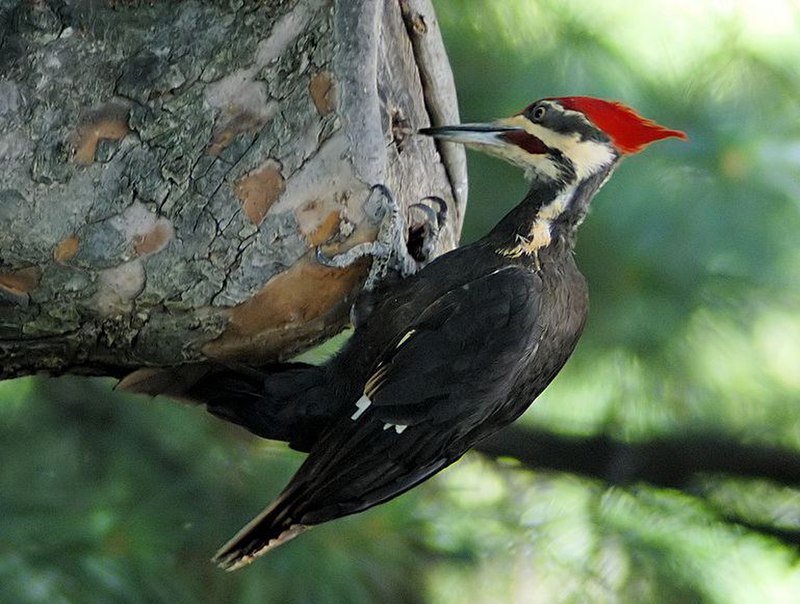
Woodpeckers are an incredibly diverse bird species, found all over the world except for Australia, New Guinea, New Zealand, Madagascar and the extreme polar regions.
They live in a variety of habitats including forests and woodlands but also rocky hillsides and deserts with no trees.
Their beaks are adapted to pecking at tree bark to find food such as insects or larvae hidden beneath it while they use their long tongues to catch them from deep inside crevices.
Woodpeckers have tough skulls that protect their brains from impact when they bang into things during drumming – a behaviour used by males for territorial signalling and reproduction purposes which is done using strong rapid beats against hollow objects like dead branches or metal poles.Scientific classification:
| Kingdom | Animalia |
| Phylum | Chordata |
| Class | Aves |
| Order | Piciformes |
| Infraorder | Picides |
| Family | Picidae Leach, 1820 |
Also Featured In: Most Common Types of Bangladeshi Birds, Most Common Winter Birds
3. Common Chiffchaff
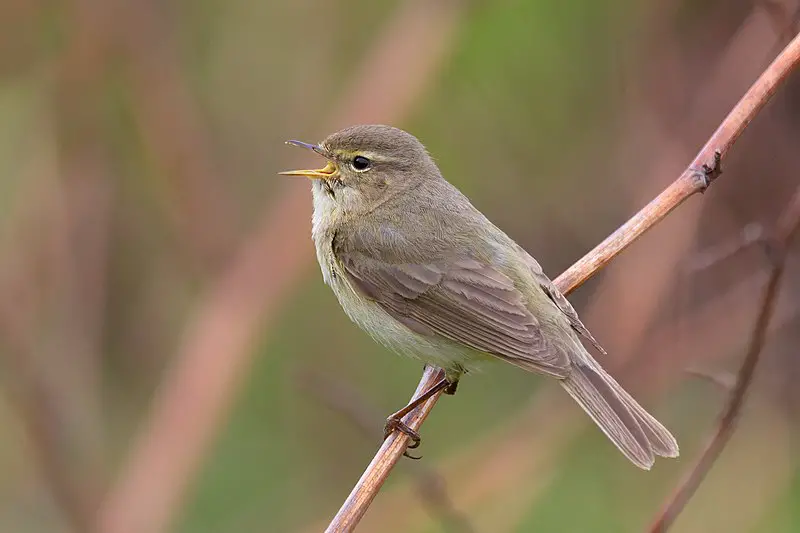
The Common Chiffchaff is a small bird found in northern and temperate Europe and the Palearctic.
It has greenish-brown plumage on its upper parts, off-white feathers beneath, and gets its name from an onomatopoeic call that resembles “chiff chaff”.
This migratory passerine breeds in open woodlands during summer before heading to southern Asia, western Europe and North Africa for winter.
A frequent visitor at gardens with good insect supplies, it feeds mainly on insects such as flies, beetles or ants which are caught by gleaning foliage or hawking aerial prey.
Despite being one of Britain’s most common birds – estimated numbers between 6–9 million pairs – their population numbers have declined over recent years due to habitat destruction caused by climate change.Scientific classification:
| Kingdom | Animalia |
| Phylum | Chordata |
| Class | Aves |
| Order | Passeriformes |
| Family | Phylloscopidae |
| Genus | Phylloscopus |
| Species | P. collybita |
Also Featured In: Birds of United Kingdom, Most Common Songs Birds that Live around You
4. Atlantic Canary
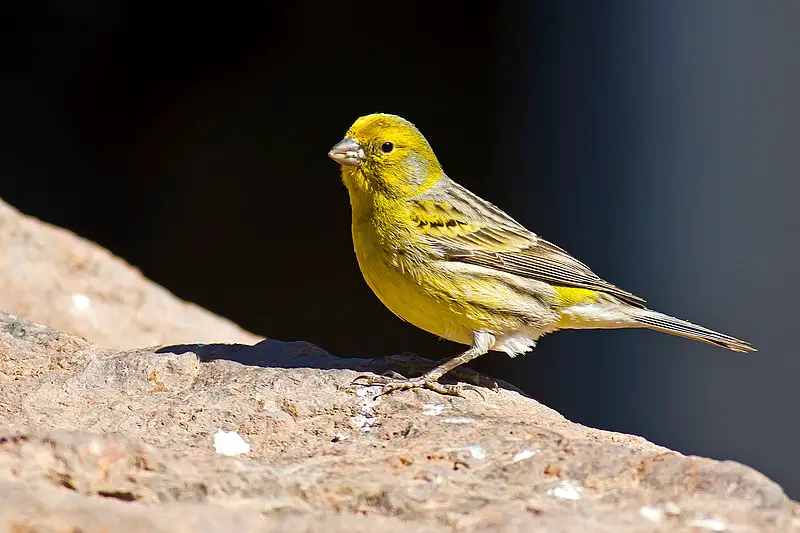
The Atlantic canary is a small, beautiful passerine bird belonging to the finch family. It is native to the Canary Islands, Madeira and Azores islands. Wild birds are mostly yellow-green in colour with brown streaks on their back.
They have a unique vocalization that has made them popular as cage birds all around the world.
In captivity they are fed fruits like apples and grape seeds along with other nuts or grains for nutrition.
These small birds live in flocks among trees where they feed mainly on insects such as spiders and caterpillars which provide protein and energy necessary for survival during winter months when food sources get scarce.
Their ability to adapt quickly makes them an ideal pet choice by many people today.Scientific classification:
| Kingdom | Animalia |
| Phylum | Chordata |
| Class | Aves |
| Order | Passeriformes |
| Family | Fringillidae |
| Subfamily | Carduelinae |
| Genus | Serinus |
| Species | S. canaria |
Also Featured In: Finches Species, Aviary Birds You Should Know
5. Berthelot’s Pipit
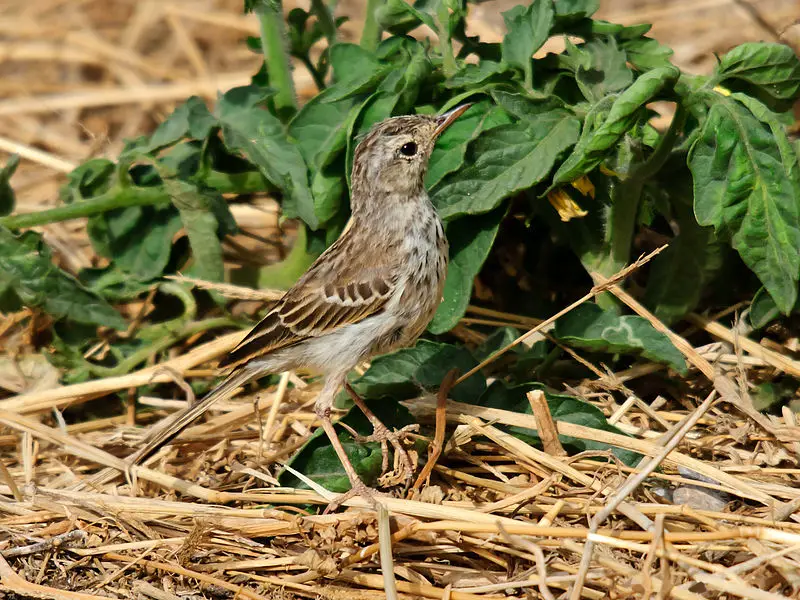
Berthelot’s pipit is a small bird that can be found in the Canary Islands and Madeira. It prefers open areas for nesting and lays 3-5 eggs on the ground.
The bird is mainly gray above, and it’s an inconspicuous-looking species on the ground. It’s a common resident in both archipelagos, and it’s about 13-14 centimeters long.
Known as a pipit, it belongs to the passerine family. Despite looking unremarkable, it’s considered a beautiful bird and is highly appreciated by birdwatchers for its delicate features, simple melodies, and unassuming nature.
Berthelot’s pipit is a species that is well-loved across the Canary Islands and Madeira.Scientific classification:
| Kingdom | Animalia |
| Phylum | Chordata |
| Class | Aves |
| Order | Passeriformes |
| Family | Motacillidae |
| Genus | Anthus |
| Species | A. berthelotii |
Also Featured In: Birds of Lanzarote, Fuerteventura Island Birds You Need to See
6. Laurel Pigeon
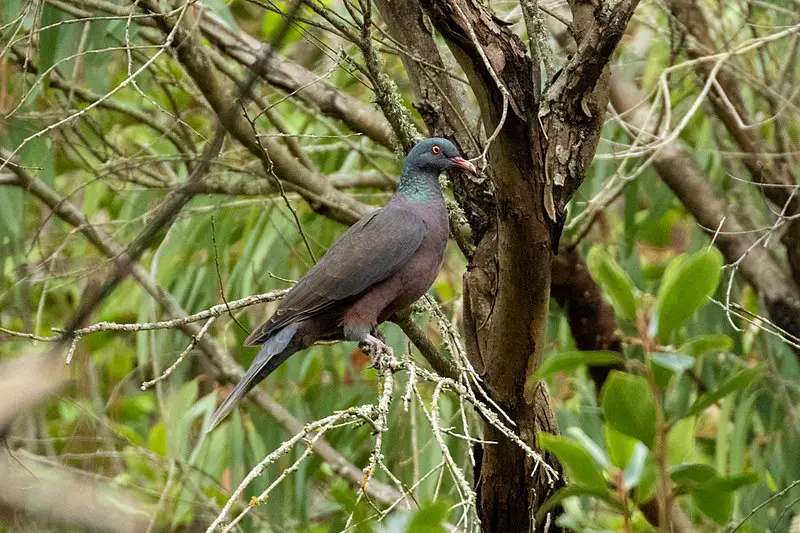
The Laurel pigeon, also known as the White-tailed Laurel pigeon, is a type of bird that belongs to the Columba genus of the Columbidae family.
This species is native to the Canary Islands in Spain and can be found in the laurel forest habitat.
It is considered a unique symbol of the island of La Gomera. Likely, it evolved from its close relative, the common wood pigeon.
The Laurel pigeon is a fascinating bird that is appreciated for its beauty and curious behavior.Scientific classification:
| Kingdom | Animalia |
| Phylum | Chordata |
| Class | Aves |
| Order | Columbiformes |
| Family | Columbidae |
| Genus | Columba |
| Species | C. junoniae |
7. Bolle’s Pigeon
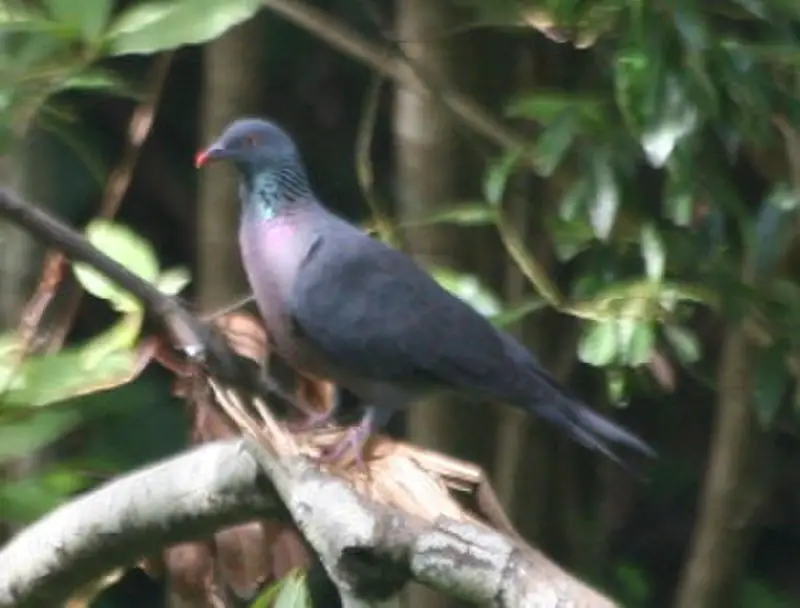
Bolle’s pigeon, a member of the family Columbidae, is native to the Canary Islands, Spain. It is named after Carl Bolle, the German naturalist who first identified the species.
Bolle’s pigeon is larger than the common pigeon, measuring between 36 and 38 cm in length. It is primarily found in the laurel forests of the Canary Islands and is specially adapted to this habitat.
This wood pigeon is distinguished from other species by its dark plumage. Additionally, Bolle’s pigeon is a unique and interesting species for bird enthusiasts due to its endemic nature, meaning that it cannot be found anywhere else in the world.Scientific classification:
| Kingdom | Animalia |
| Phylum | Chordata |
| Class | Aves |
| Order | Columbiformes |
| Family | Columbidae |
| Genus | Columba |
| Species | C. bollii |
8. Canary Islands Chiffchaff
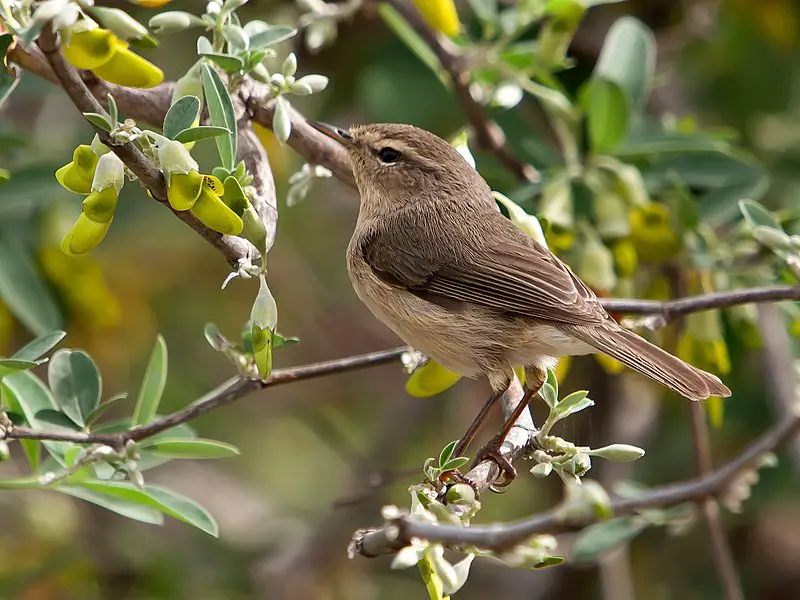
The Canary Islands chiffchaff is a bird that is native to the Canary Islands in Spain. This leaf warbler species was previously classified as a subspecies of the common chiffchaff but is now considered a separate species known by the scientific name Phylloscopus canariensis.
Despite its name, the Canary Islands chiffchaff is not actually a type of finch but a member of the warbler family.
This bird has distinctive traits, including a yellow-brown plumage and a pale yellow belly with a thin black bill. It is commonly found in subtropical or tropical dry forests, and its diet is mainly composed of insects.
The species is not currently considered to be at risk of extinction, although habitat loss and climate change may pose a threat in the future.Scientific classification:
| Kingdom | Animalia |
| Phylum | Chordata |
| Class | Aves |
| Order | Passeriformes |
| Family | Phylloscopidae |
| Genus | Phylloscopus |
| Species | P. canariensis |
9. Tenerife Blue Chaffinch
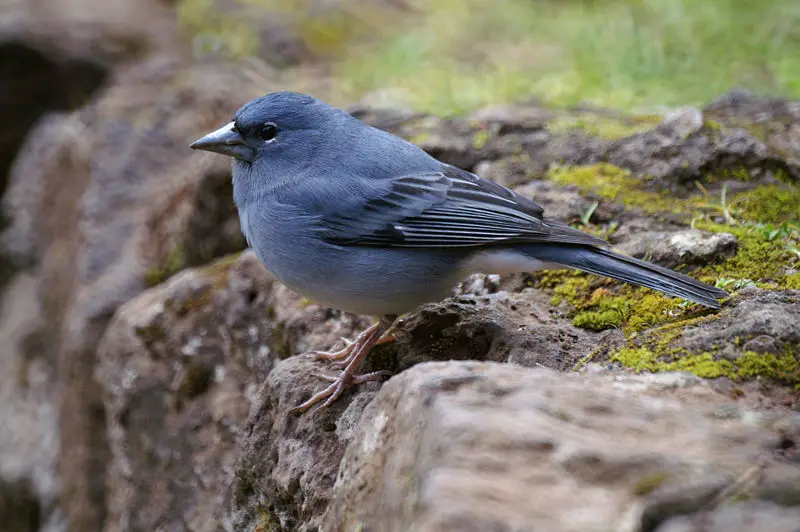
The Tenerife blue chaffinch is a unique passerine bird that belongs to the finch family Fringillidae. This bird is only found in Tenerife, one of the Spanish Canary Islands.
It is considered to be the natural symbol of this island, alongside the Canary Islands dragon tree.
The Tenerife blue chaffinch has been classified into two subspecies: Fringilla teydea polatzeki from Gran Canaria and Fringilla teydea teydea from Tenerife.
However, in 2015, the classification was changed, and the species is now just known as Fringilla teydea.
The bird is known for its beautiful blue plumage, and it is a favorite among bird watchers and conservationists.
However, like many unique species, the Tenerife blue chaffinch is threatened with extinction due to habitat loss and climate change.Scientific classification:
| Kingdom | Animalia |
| Phylum | Chordata |
| Class | Aves |
| Order | Passeriformes |
| Family | Fringillidae |
| Subfamily | Fringillinae |
| Genus | Fringilla |
| Species | F. teydea |